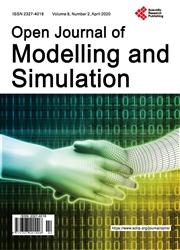Simulating the Health Impact of Particulate Emissions from Transport Fuels Using Multipath Particle Deposition Model (MPPD)
引用次数: 1
Abstract
Transport fuels emit particulates of varying chemical nature and size. These particulates are known to cause respiratory problems of medical concern. The need to simulate the breathing characteristics of particulates generated from combustion events is very important in estimating the respiratory clearance of these particles. Consequently, this study examines the nature of particulate matter from the pyrolysis of a mixture Croton megalocarpus biodiesel and fossil diesel, and pure biodiesel. The study was explored at an optimum temperature of 600°C in an inert nitrogen environment at a contact time of 2 sec. Scanning electron microscope was used to examine the surface of the particulates. Multiple-Path Particulate Dosage (MPPD Ver. 3.04) model was used to determine the breathing phenomena of infants, teenagers and adults at different orientations. Co-pyrolytic Char particulates and pyrolytic croton thermal char were classified as ultrafine, PM0.03 and PM0.02 respectively. The MPPD model results indicated that ultrafine particles tend to be deposited in pulmonary regions more than head and trachea regions, due to high probability of diffusibiliy of ultrafine particles. It was noted that 8 years old exhibits a unique trend with high total deposition and poor respiratory clearance when compared to an adult of 21 years old.利用多路径粒子沉积模型(MPPD)模拟交通燃料排放颗粒物对健康的影响
运输燃料排放出不同化学性质和大小的微粒。已知这些微粒会引起医学关注的呼吸问题。模拟燃烧产生的颗粒的呼吸特性对于估计这些颗粒的呼吸清除率非常重要。因此,本研究考察了混合巴罗豆科生物柴油和化石柴油以及纯生物柴油热解产生的颗粒物质的性质。在惰性氮环境下,在600°C的最佳温度下进行研究,接触时间为2秒。使用扫描电子显微镜对颗粒表面进行检查。采用多路径颗粒物剂量(MPPD Ver. 3.04)模型对婴儿、青少年和成人在不同方位的呼吸现象进行了研究。共热解炭颗粒和热解巴豆热炭颗粒分别被分类为超细颗粒、PM0.03和PM0.02。MPPD模型结果表明,由于超细颗粒的高扩散概率,超细颗粒更倾向于沉积在肺区而不是头部和气管区。值得注意的是,与21岁的成年人相比,8岁儿童表现出高总沉积和低呼吸清除率的独特趋势。
本文章由计算机程序翻译,如有差异,请以英文原文为准。
求助全文
约1分钟内获得全文
求助全文

 求助内容:
求助内容: 应助结果提醒方式:
应助结果提醒方式:


